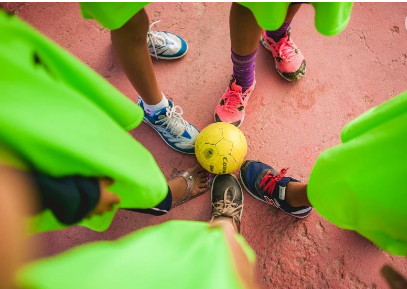Adopt healthier habits through physical activity and nutrition
Content Inspired by UNICEF
Summary
- Latest recommendations that help children and youth with personal development
 UNICEF has published recommendations for healthy living. Discover the latest recommendations that help children and youth with personal development.
UNICEF has published recommendations for healthy living. Discover the latest recommendations that help children and youth with personal development.
Sport and play are basic rights of children, just like health and education.
They play a vital role in the development, happiness and well-being of children and young people. UNICEF advocates for the concept of sport for development: sport is not only a goal in itself, it is also a tool that helps improve the lives of children, families and the whole communities.
- Participation in sport improves children’s educational attainment and skills development including empowerment, leadership and self-esteem – contributing to their overall well-being and future prospects. Through its Sports for Development initiative, UNICEF aims to highlight the importance of sports for children’s lives.
- Evidence shows that well-designed sport initiatives are improving the lives of children everywhere. Sports activities increase participation in initiatives and services for children and it is also a good tool to avoid exclusion and marginalization.
Sport and quality education.
Education is a fundamental human right: every child is entitled to it. UNICEF’s education programmes are using play, physical education and sport to promote healthy child development, and are used as a mean to reach and educate children who are not part of the formal education system.
When included in a school curriculum with proper instruction, physical education has been shown to improve the learning performance of children and young people by increasing school attendance and the desire to succeed academically. Sport can also be used, both in formal and after-school programmes, to encourage child-centered and participatory learning, and to teach life skills.
Sport and nutrition
Sport also contributes to maintaining the health of bones, muscles and joints, also decreases the risk of obesity, overweight and other diseases that endanger the lives of children. To make the most of it, this important practice must be aligned with a balanced and healthy nutrition.
Here are some recommendations on sports activities for children according to their age:
Children under one year of age:
Should be physically active several times a day in a number of ways. For those who cannot yet move, this includes at least half an hour of physical activity in the prone position.
Infants should also sleep between 2 and 5 hours a day until they are three months old and between 2 and 4 hours when they are four to twelve months old.
Children one and two years old:
- By the age of one, physical activity should increase to at least 3 hours a day. The duration of sleep should be between 11 to 14 hours daily. In addition to the fact that they should not be in front or in direct contact with a screen until the age of two, babies should not be kept in a stroller, in a high chair or on someone’s back for more than an hour continuously. The WHO recommends that children over two years of age should avoid to be passively exposed to screens for more than an hour per day at home.
Three and four year olds:
- Three and four year olds should get at least 3 hours of physical activity per day. This includes at least an hour of “moderate to vigorous” physical activity. In addition, the time spent in front of the screens should not exceed 1 hour and a good quality sleep from 10 to 13 hours.
- Sport is the best vector to boost children to develop social skills, accept defeat, teamwork and discipline and healthy habits.